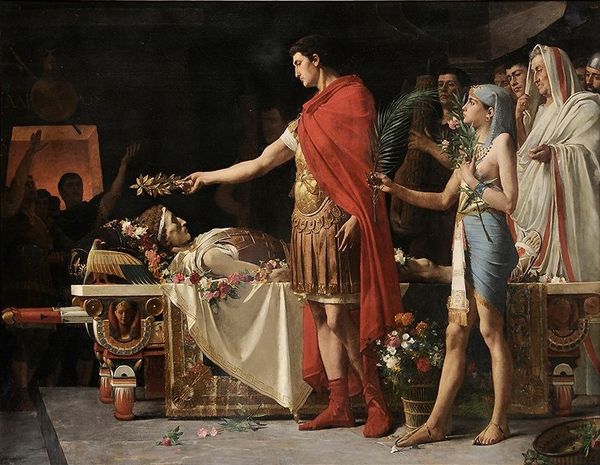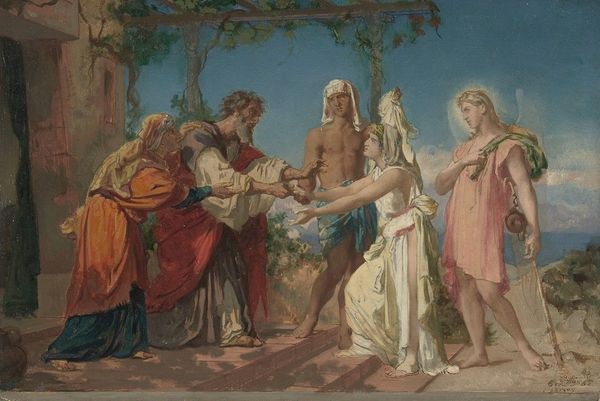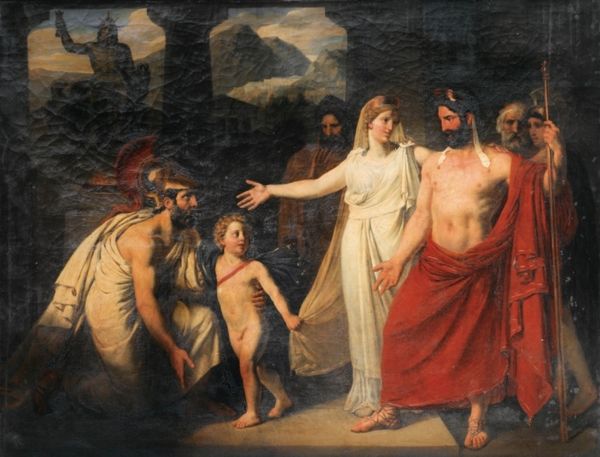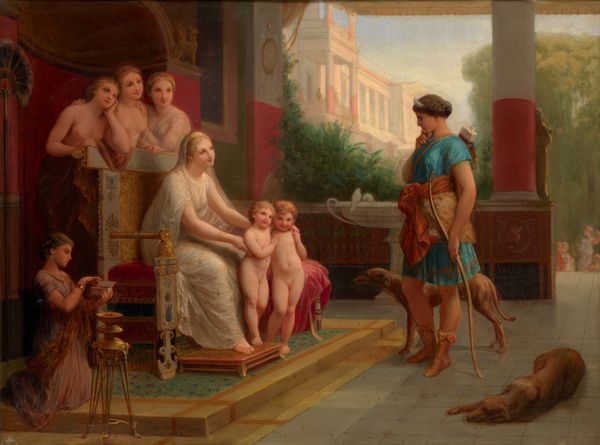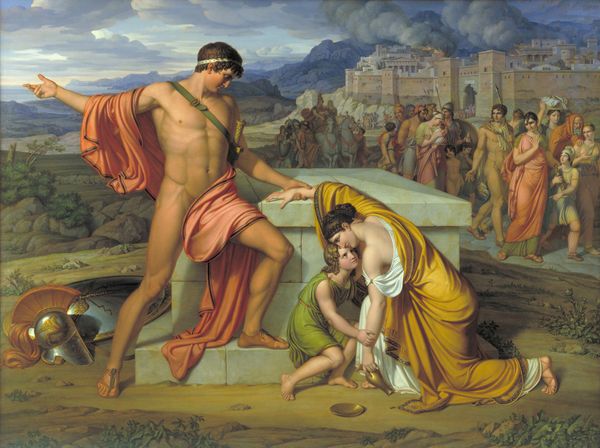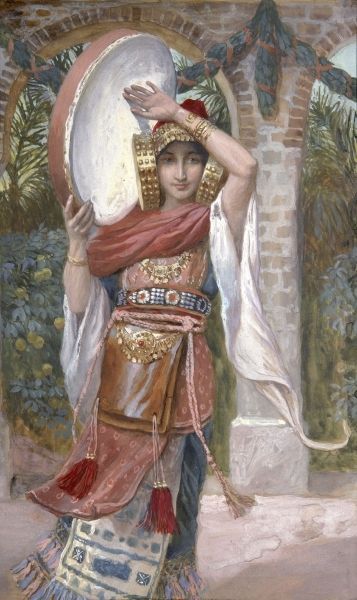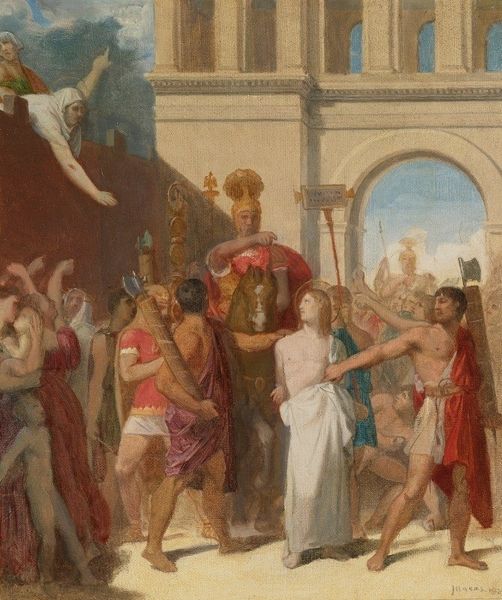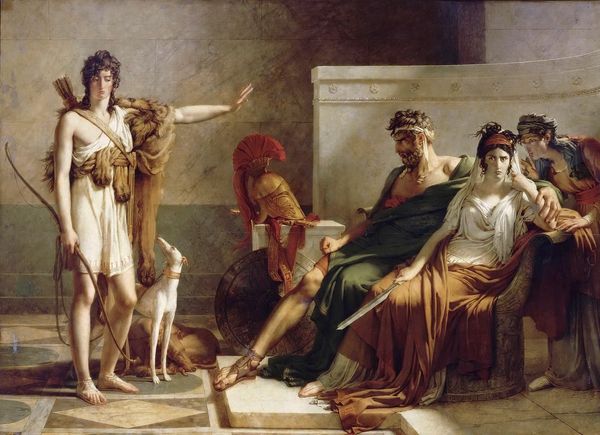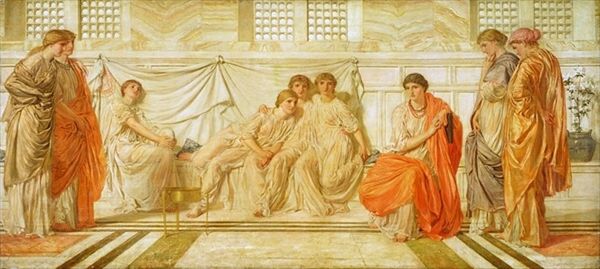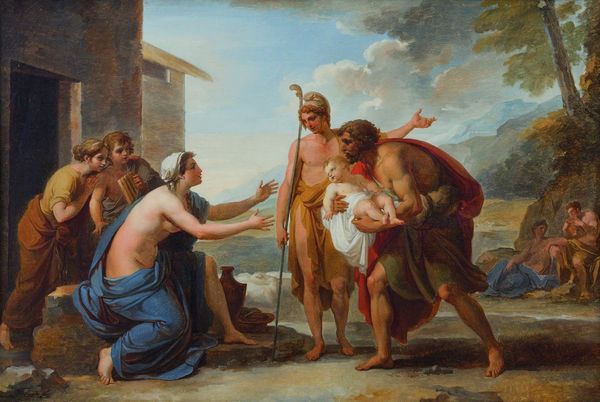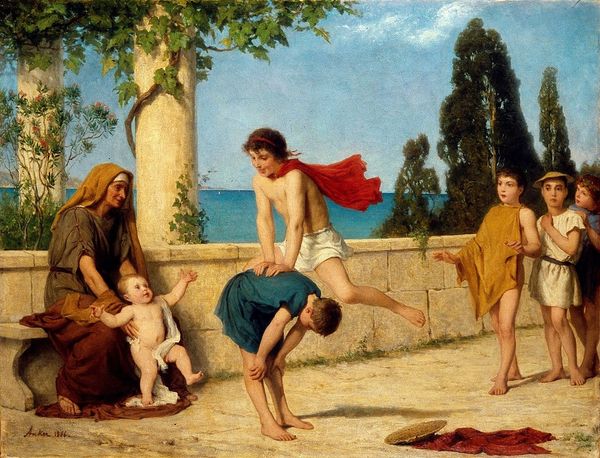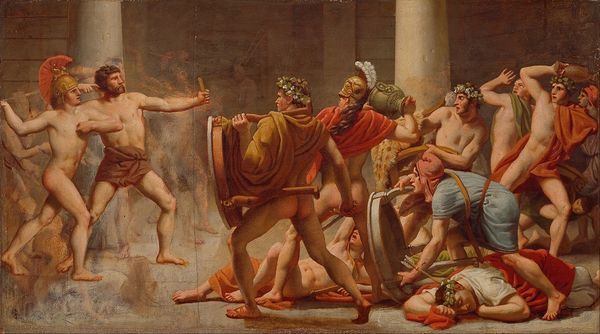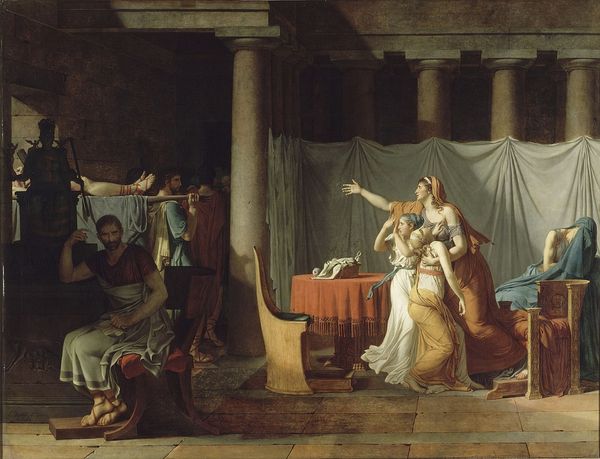
oil-paint
#
neoclacissism
#
allegory
#
narrative-art
#
oil-paint
#
landscape
#
classical-realism
#
figuration
#
oil painting
#
mythology
#
history-painting
Copyright: Public Domain: Artvee
Editor: Here we have "Hector's Farewell to Andromache" painted by Christoffer Wilhelm Eckersberg, sometime between 1813 and 1816, using oil paints. The composition is quite striking, so staged almost like a theater play. What strikes you when you view it? Curator: Immediately, the stark contrast between the smooth finish of the figures and the rough texture implied in the architectural background raises questions. What specific pigments were available at that time, and how would Eckersberg have sourced them in the context of early 19th-century Europe, particularly during the Napoleonic Wars? The material limitations and trade routes likely played a role in the aesthetic choices. Editor: That's fascinating. I hadn't considered the actual availability of the materials influencing the artwork so directly. Curator: Furthermore, how does the production of the armor worn by Hector reflect the social hierarchy of the time? Was it mass-produced, or individually crafted? Who was involved in its manufacture? Exploring the labor involved, we can understand the social context embedded within this seemingly straightforward Neoclassical painting. The crisp depiction, which at first seems like just academic technique, may highlight the artist’s engagement and concerns about the material world surrounding him. Editor: So, it's not just about the story, but about the real-world conditions that made the story possible to be represented in this way. The choice of materials and production become central to the work's meaning. Curator: Precisely. It forces us to reconsider traditional boundaries between high art and craft, placing the emphasis on materiality and consumption of those materials, rather than an idealized historical event. Editor: I'll never look at a Neoclassical painting the same way again. It really opens your eyes to what's *behind* the image. Curator: Indeed, thinking about the social context allows us to unpack those additional elements and arrive at some fresh perspectives on the artwork.
Comments
No comments
Be the first to comment and join the conversation on the ultimate creative platform.
